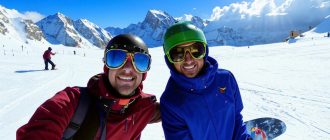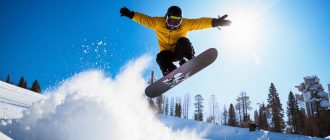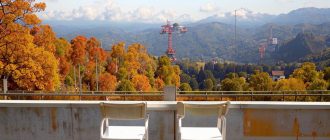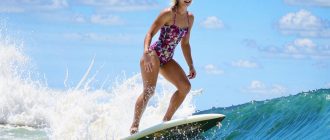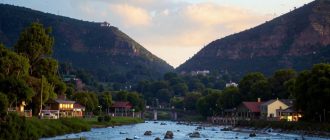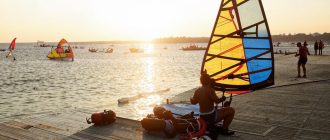
Head of snowboarding school X-camp Russia
How to choose snowboarding equipment and what to pay attention to when buying it?
Snowboarding as a vivid representative of extreme sports requires a sensible approach and careful preparation of equipment for riding. You are unlikely to enjoy riding when the boots are not the right size or the board is always buried in the snow because of the wrong height. Let’s discuss the nuances of equipment, which should be paid attention to regardless of your skiing experience.
Very often the first thing a person goes to choose is a snowboard. In fact, you should start with another thing – with boots. A beginner should buy all the equipment “softer” and more comfortable. At the first stages of training you should be as comfortable as possible.
Snowboard and its size
For those who are just starting out in snowboarding, it makes absolutely no difference whether the board is the latest season or two years old. You won’t feel the difference in characteristics and won’t understand what it can do. On the contrary, advanced amateurs and professional riders need efficient boards, preferably as lightweight as possible and with a strong core (center section).
The size of the snowboard is selected according to two parameters – the weight and height of the rider. The brand puts a special sticker on each board, which indicates the characteristics of the snowboard. You can use it to find the right one for you.
Manufacturers always lay down a certain “weight fork”, for example, 40-60 kg. For a beginner, it is optimal to choose a board so that his own weight is in the middle of this fork. Such a board is good for the first rides on simple pistes. If we talk about other styles of riding, then for freestyle you should choose a board on the upper edge of the fork, and if you are more attracted to high speed and carving – on the lower edge. It all has to do with the responsiveness and control of the snowboard.
The same goes for height. You need to look for something in the middle for yourself. But personally, I rarely choose boards by height, mostly by weight. Height is a very subjective indicator, and weight has a dramatic effect on controllability. If your height is 190+, you should take the biggest snowboard, and if you’re 170-180 cm, you should focus more on weight.

Additional equipment
You need to realize that the more you take with you, the harder it will be for you to ride. Accordingly, when just riding on the slopes, you do not need to wear all the protection that exists in the world. If you go out on the slide near the house and it is more or less safe, then the protection should be minimal. The same is true in the mountains. When skiing on green and blue runs, back and elbow protection will only get in the way, but in the case of hard freeride and helicopter jumps, it will come in handy.
The higher the risk, the more protection you need.
If you plan to ride off-piste, be sure to take the following with you:
- beeper – a receiver-transmitter of radio signal in case of falling into a snow avalanche, works on the frequency of 457 kHz;
- a feeler gauge for probing the snow when searching for people trapped in an avalanche;
- shovel.

Clothing
Many people think that clothes for alpine skiing and for snowboarding are exactly the same. They really aren’t. While skiing, you don’t have to do constant squatting as you do while downhill on a board. For snowboarding, it is better if the pants are wide, and the jacket – long, so that the back was fully covered.
What of the equipment can be left at home? Without a fox tail on your helmet, you can ride.
Advice from the editors
When riding in big mountains, be sure to take a mask with two different filters: for bad weather – yellow or orange, and for sunny weather – gray, mirror. It is important that the mask has a good level of UV protection.

Among other things, while skiing in the mountains it is better to have a second set of socks and gloves, sunscreen and sunscreen in your backpack. It’s a good idea to know the number of the resort’s lifeguard, but in case of emergency it can be found on the ski pass. In case of minor breakages, bring a screwdriver, extra straps for bindings and bolts.

